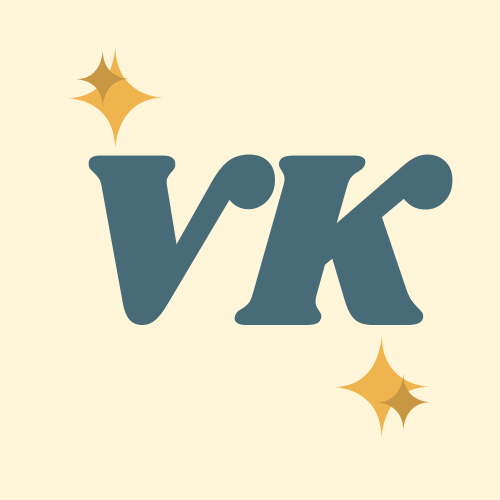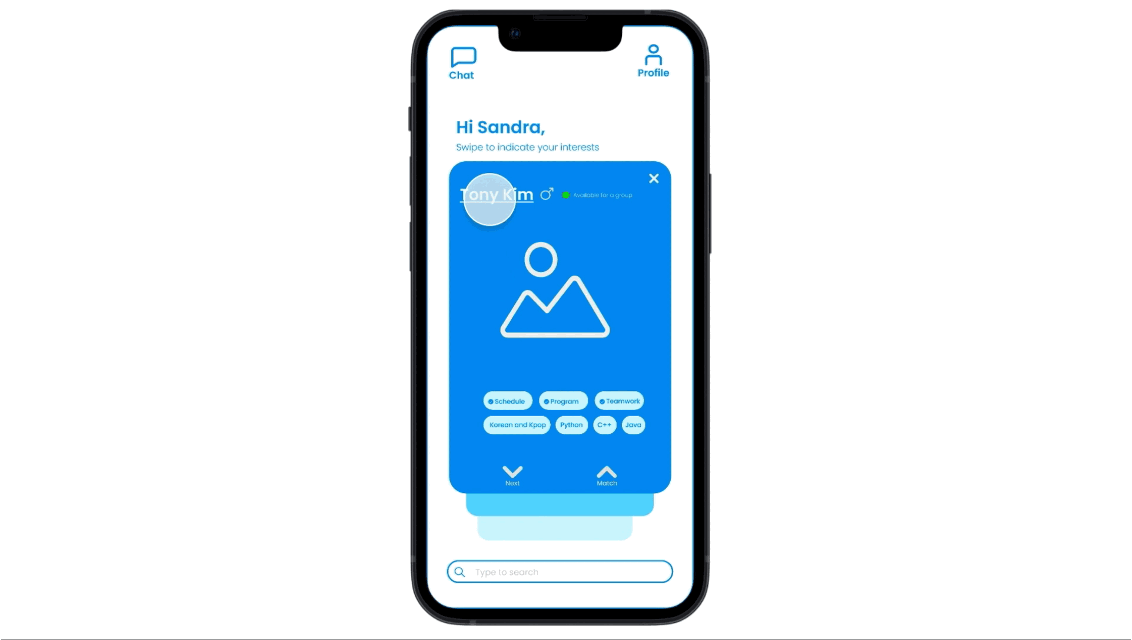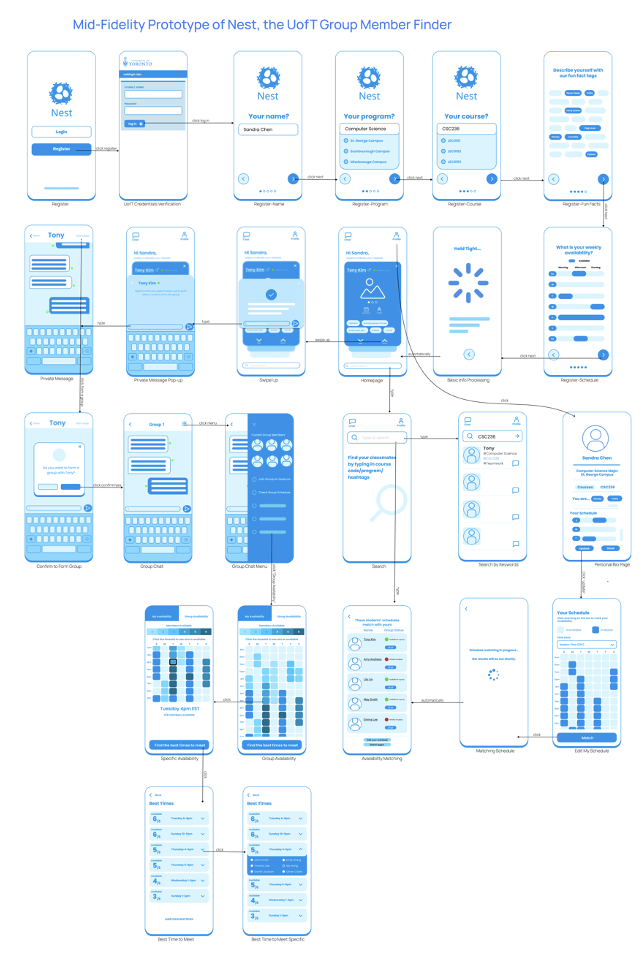NEST
Client: University of Toronto, Mobile Application
Team Members: Jonathan Ho, Erxun Tan, Emily Wong, Junjie Huang, Skyler Huang
Programs: Maze, Figma
Skills: User Research, Usability Testing, Lean Evaluation, Interviews, Wireframing and Prototyping
Objective: To develop a medium fidelity design prototype of a student group finder application
How do students find, reach out and communicate with compatible team members for school projects?
The COVID-19 pandemic has changed education significantly and resulted in students and institutions facing problems and challenges with the transition from traditional classroom learning to online learning. Our team focused on how to help students meet other students and form groups for assignments, given the transition back to a physical setting.
We identified three hills statements to identify the core functions of our solution to Sandra’s problems:
A student who has a group project can find other students with similar schedules on the same day the professor announces the project.
A student looking for a group can find and reach out to classmates using a singular communication channel.
A student looking for a group can know more about their classmates’ working styles without previously working with them.
User Research and Findings
Surveys
We conducted a survey of 411 University of Toronto students, which consisted of colleagues, acquaintances and the network of group members attending the University of Toronto. There were two distribution iterations: the first survey was more focused towards asking participants about their experiences with forming groups and using social media platforms to connect with other students while the second survey focused more on one's experiences with forming groups, using tools to form groups and their experiences with connecting with others before and during the COVID-19 pandemic.
Interviews
We conducted 9 interviewsto understand their process, difficulties and pain points around forming a group for academic assessments to design a solution for improving the group formation experience. Key findings included:
Participants rated the group forming experiences as
fairly difficult during the pandemicMost participants have not yet used Quercus group
featureParticipants find it difficult to make friends or
connect with old friends in an online learning
environmentParticipants think it is harder to connect with
peers/friends online than in-person
Prototype
Conclusion
Persona and User Journey
We created a persona to identify users’ needs and pain points when using existing solutions. Sandra is a 2nd year international student studying Computer Science. Shehas difficulty connecting to other people at school but needs to connect with classmates to complete group projects for her courses. Given the pandemic, it is very difficult to meet and interact with people online. She desires to make quality connections people at school.
We also mapped out the user journey for Sandra and identified the following key paint points:
"I'm not sure if my group members are reliable."
"Will we collaborate well together? What kind of people are they?"
"Nobody reached out to me."
"I need to find teammates ASAP."
We designed low and mid-fidelity protoypes with the key features of finding students with similar schedules, use of a single communication channel, and understanding different students’ working styles.
Further usability testing was conducted with 61 participants on the protoype to gain insights .
50.1% was able to complete all tasks, which is relatively low rate and indicated half of the participants became lost lost or used another unexpected path to complete the tasks. However, 76% of participants rated the prototype 4 out of 5.
We also analyzed the misclick rate, which is the number of wrong clicks from the participants out of the total clicks they have on the screens. Tasks 1 and 2 had a high misclick rates which are 30.5% and 45.2% whereas Task 3 only had 14.6% misclick rate.
This project taught me the importance of testing and user interactions. We came across many interesting findings with over 100 students participating in surveys, interviews, and usability testing. Testing never ends and can continuously provide new insights.












